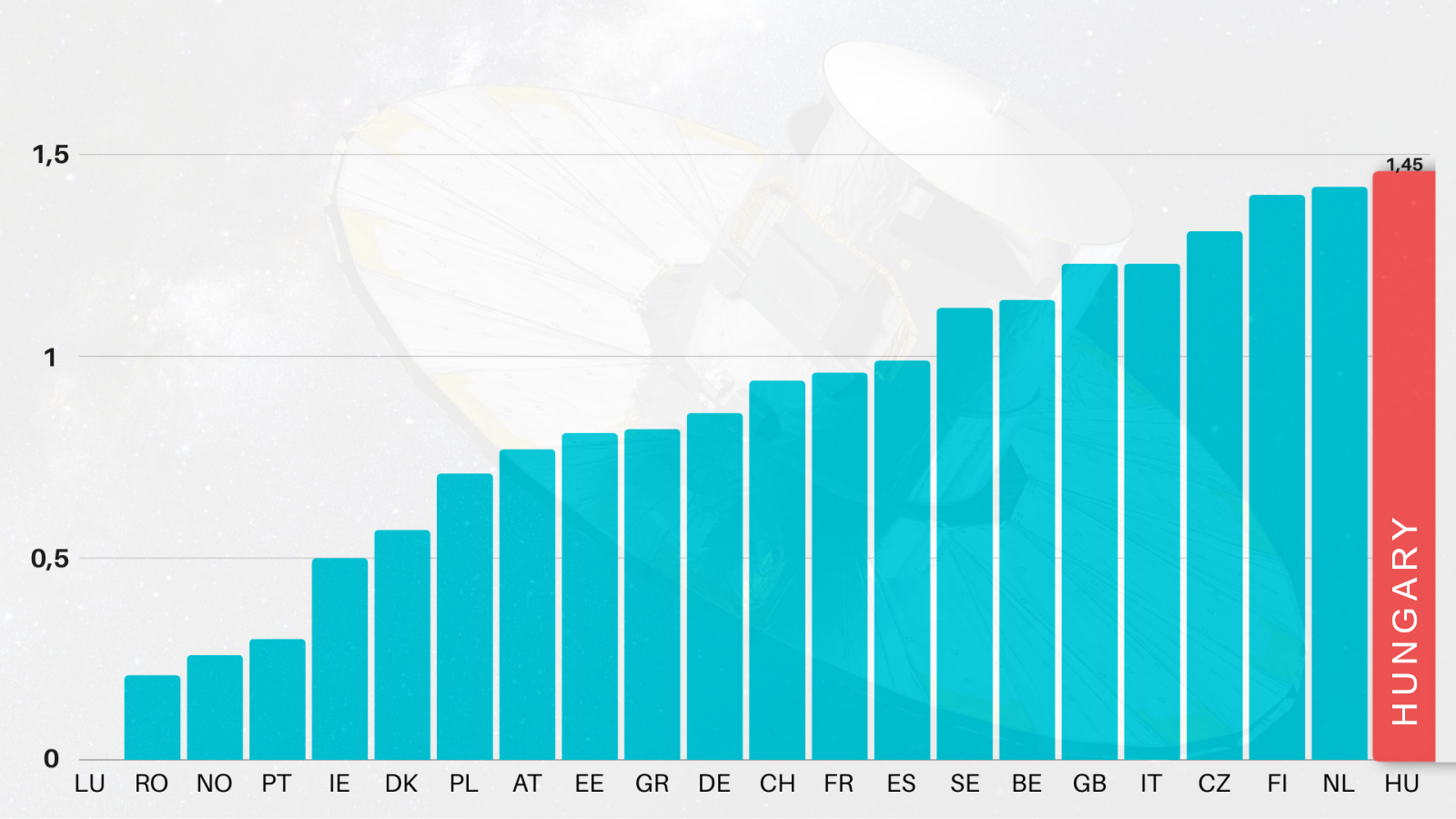The study, carried out by Guido de Marchi and Arvind N. Parmar, presented the performance of space telescopes and space probes in ESA Science Programme as measured in peer-reviewed publications, detailing the year-to-year variation in published results and the performance indicators for each member country. In addition to changes over time, the geographical distribution of authors across the ESA member countries was assessed and compared with the financial contribution of each country to the ESA Science Programme.
In general, the results show an unsurprising correlation that the larger a country's contribution to ESA funding, the more articles are published by members of the space astronomy community in that country. In some countries, however, the researchers have been noticeably more effective in publishing new discoveries based on ESA mission data: the Netherlands, Finland and Hungary have contributed research and peer-reviewed publications to various missions at rates significantly above their contribution. Hungary has recorded more than 200 first-authored articles over the studied period, which is 45% more than the average of the 22 Member States based on the Hungarian budget contribution (the Dutch surplus is 42% and the Finnish 40%).
As the authors of the paper point out, the majority of the Hungarian results were based on data from the Gaia astrometric space observatory (56 papers) and the Herschel infrared space telescope (31 papers). This is an extremely important metric, but it is also one of many possible parameters for assessing a country's space astronomy activities. Although the analysis shows that the performance of a country can be influenced by complex interactions of different causes, it can certainly be argued that the Hungarian space astronomy community is the most efficient in Europe in converting ESA mission data into scientific discoveries in relation to the financial contribution invested. It is also worth looking at this data with an eye towards the areas of astronomy and space research that deserve further development and financial investment.

Ratio between the percentage of scientific publications and the percentage of financial contribution to ESA per nation (Source: HUN-REN CSFK, based on the publication)
László Szabados, Professor Emeritus of Konkoly Observatory at the HUN-REN CSFK, pioneered the Hungarian participation in the Gaia mission mentioned above. "Through hard work, we have succeeded in bringing together nearly a dozen Hungarian astronomers to carry out world-class research based on the measurements of Gaia, the revolutionary space observatory that is producing a three-dimensional map of the Milky Way," said Szabados, who is primarily involved in the research on pulsating variable stars in the Gaia mission.
"The participation of the Hungarian space astronomy community in all ESA exoplanetary space telescope missions is a recognition that our knowledge and experience are at the forefront of international astronomy," said Róbert Szabó, Director of Konkoly Observatory and astronomer leading teams in ESA's PLATO and ARIEL space telescope missions. "It is important to underline that, in addition to scientific research, space industry has also been involved in the implementation of the missions." - stressed the astronomer, who is increasingly relying on artificial intelligence applications in his scientific research.
Ágnes Kóspál, a member of the ESA Scientific Programme Committee's Astronomy Working Group, has been doing important expert work for years on the selection of future space programmes. "It is sometimes very difficult to determine which of the planned space programmes is the most promising among the concepts submitted in the competitive bidding system. As a peer reviewer, we need to be as objective as possible in determining which of these will be the most exciting scientific discoveries in 10-15-20 years' time."
The European Space Agency is an intergovernmental organisation of 22 member countries, whose mission is to develop space research, industry and space sciences in Europe. Its scientific programme includes leadership and participation in the construction of space telescopes, solar system space probes and solar physics space observatories. After many years of associate membership, Hungary became a full member in 2015. In 2023, the launch of the JUICE Jupiter probe and the Euclid space telescope continued the expansion of ESA's science programme with the addition of promising missions, also involving Hungarian participation.
Source: Guido De Marchi and Arvind N. Parmar: "ESA Science Programme Missions: Contributions and Exploitation - ESA Mission Publications", prepared for publication in ISSI Scientific Reports
A freely available version of the published article: https://arxiv.org/abs/2402.12818